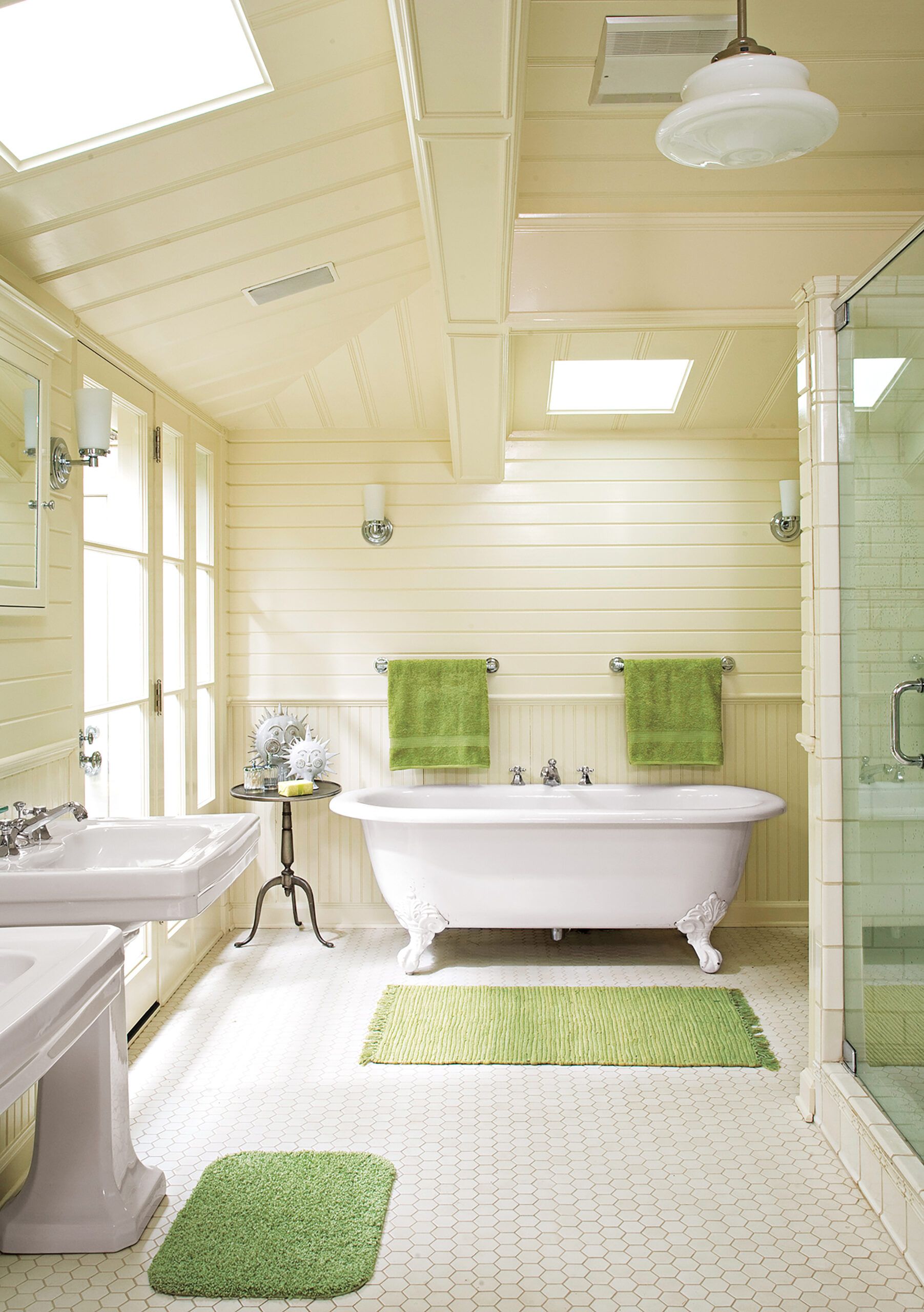There’s a lot to decide when redoing a bathroom. You’ll need to choose fixtures, lighting, flooring, countertop materials — and that’s just the easy stuff. The bigger considerations are things like plumbing, layout, and electrical. In this article, we explore both major and minor decisions categories that you’ll need to think through for a successful bathroom renovation.
Determining Your Bathroom Remodel Goals
Before diving into the renovation process, you should clearly define your objectives and assess your current space. This initial planning stage will help guide your decisions throughout the project and ensure the end result meets your needs.
Assessing Your Current Space
Take a critical look at your existing bathroom to identify areas that need improvement. Consider factors such as layout efficiency, storage capacity, lighting, and overall functionality. Make note of elements you’d like to keep and those you want to change. This assessment will serve as a foundation for your renovation plan.
Defining Your Renovation Priorities
Determine your must-haves and nice-to-haves for the remodel. Are you focused on increasing storage, improving accessibility, or creating a spa-like retreat? Establishing clear priorities will help you make decisions about where to allocate your budget and which features to prioritize versus where you can compromise. Remember that a successful renovation balances aesthetics with practicality to create a space that’s both beautiful and functional.
Planning Your New Bathroom Layout
A well-designed layout is the foundation of a successful bathroom renovation. Whether you’re working with a spacious master bath or a compact powder room, thoughtful planning can maximize space and improve functionality.
Master Bath Considerations
When redesigning a master bathroom, focus on creating a space that comfortably accommodates the number of people using it. Consider incorporating these features for optimal functionality:
- A separate toilet room for privacy
- A double vanity with sinks spaced at least 36 inches apart
- A standalone shower stall in addition to a tub
- Wide pathways (36 to 42 inches) for easy movement
Small Bathroom and Powder Room Tips
For smaller bathrooms and powder rooms, efficient use of space is key. Consider these strategies to make the most of limited square footage:
- Choose light colors and large mirrors to create the illusion of more space
- Install a pocket door to eliminate swing space
- Opt for a pedestal sink or wall-mounted vanity to free up floor space
- Use a corner sink to maximize the available area
Remember, even in a small bathroom, you can fit a sink and toilet into an 11-square-foot area while meeting building codes. However, for comfort, aim for a space that’s three or four feet wide and six to eight feet long.
Choosing the Right Replacement Bathroom Flooring
The right flooring choice enhances overall design while providing durability and safety.
Tile Options
Tile remains a popular choice for bathroom flooring due to its versatility and water resistance. For easy maintenance, opt for porcelain or glazed tiles rather than porous natural stone tiles such as limestone, which require regular sealing. If slip resistance is a concern, choose tiles with textured surfaces, matte finishes, or sand-containing glazes. Small tiles with numerous grout lines offer better traction than large tiles.
Consider the overall style of your bathroom when selecting tile colors and patterns. Achieve a cohesive look by coordinating floor tiles with wall tiles or other design elements in the space.
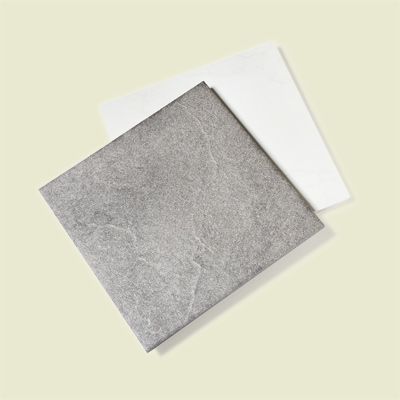
Radiant Floor Heating
Incorporating radiant floor heating can add a touch of luxury to your bathroom renovation. This system makes cold tile floors more comfortable, especially on chilly mornings.
To maximize efficiency, connect your radiant floor heating to a programmable thermostat. This allows you to set the system to warm up before you wake, ensuring toasty tiles when you start your day. Note that it may take up to 45 minutes for the floor to reach the desired temperature.
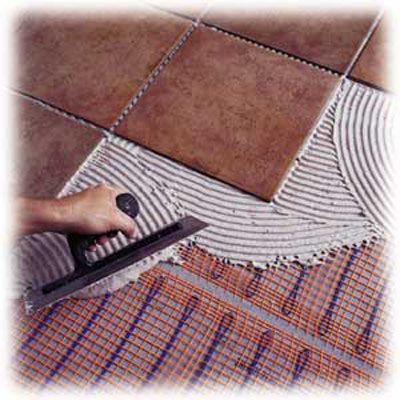
Selecting Brand New Bathroom Fixtures
You have many options when choosing fixtures. Go for fixtures that complement your home’s style, are in your budget, and match your lifestyle in terms of cleaning and maintenance.
Sink and Vanity Choices
The sink and vanity are often focal points in a bathroom, so select options that balance style with practicality. Consider these popular choices:
- Pedestal sink: Ideal for small spaces or powder rooms but offers no storage.
- Vanity with sink: Provides the most storage and counter space, making it suitable for larger bathrooms.
- Vessel sink: Sits above the counter, allowing for more storage underneath but less usable counter space.
When selecting a vanity, consider available space and storage needs. A standard 30-inch vanity offers about 15 cubic feet of storage and 10 inches of countertop on each side of the sink.
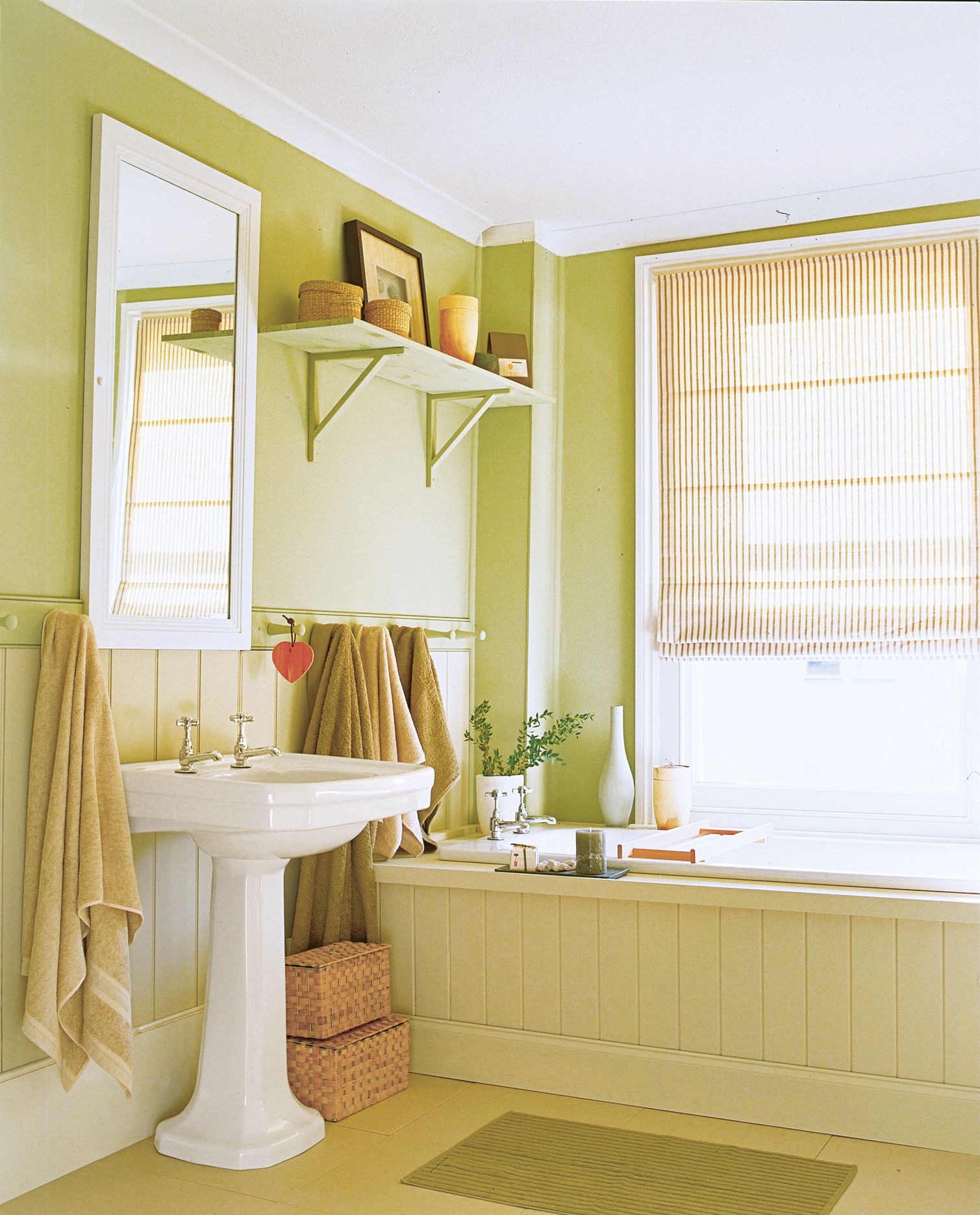
Toilet Selection
Look for toilet models with a maximum performance score of 500 or higher, which indicates efficient flushing performance. Many WaterSense-rated toilets meet this criterion while using as little as half of the 1.6-gallon-per-flush legal limit, making them both effective and eco-friendly.
Shower and Tub Decisions
When planning your shower or tub area, consider these factors:
- For those who enjoy baths, a soaker tub is a relaxing addition.
- If space allows, walk-in showers are most popular among homeowners and may contribute to resale value.
- In a shared bathroom, a separate shower stall allows for simultaneous use.
Remember to include practical features such as shower niches for storing toiletries. A recessed cubby in the shower wall provides a convenient spot for shampoo and soap without taking up floor space. Size the niche to minimize tile cuts, and consider lining the bottom with a solid surface for easy cleaning.
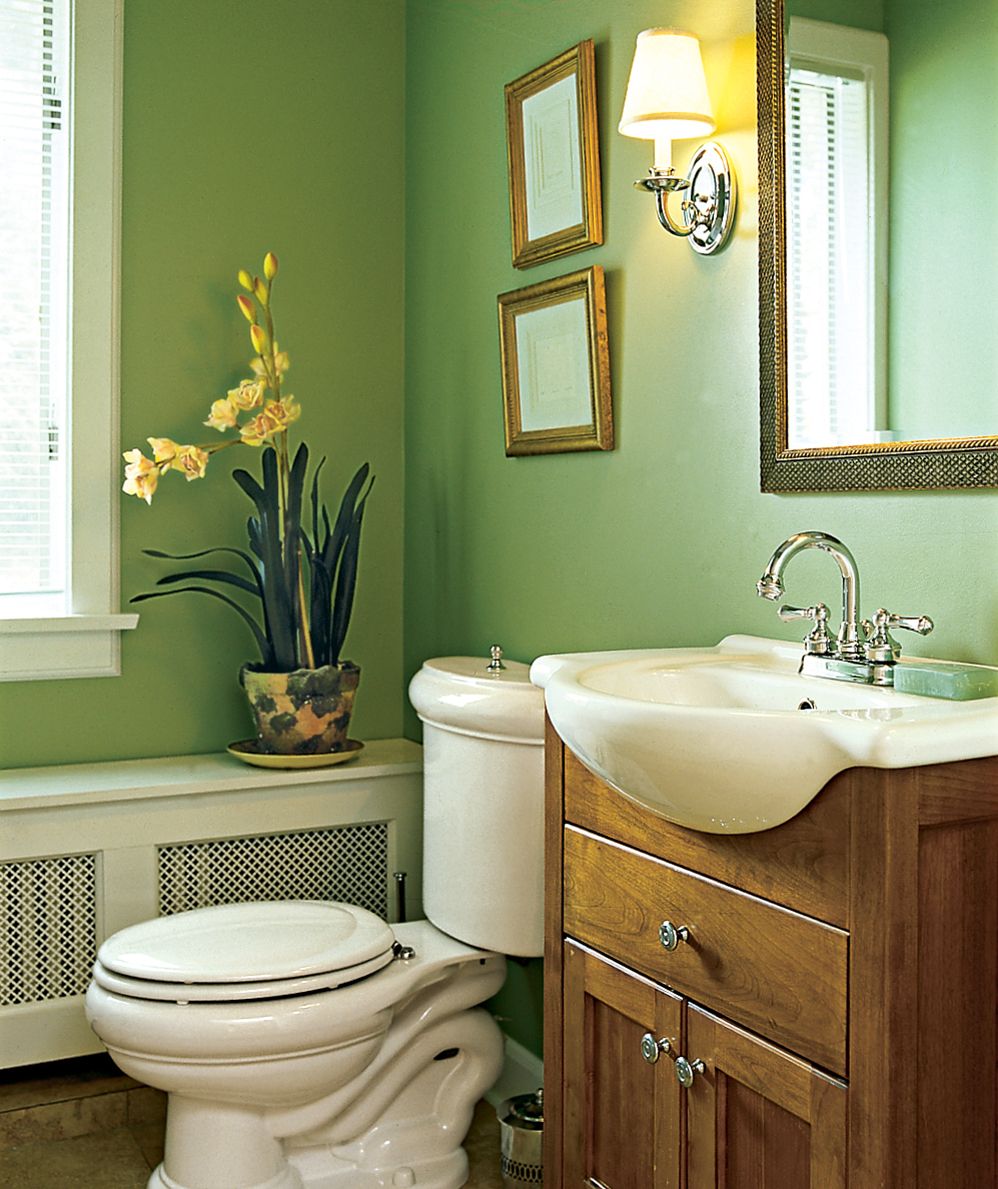
Optimizing Bathroom Storage and Space
A well-functioning bathroom should have plenty of storage and enough counter space to accommodate your needs. Thoughtful planning will improve your daily routine and keep your bathroom organized.
Vanity Storage Solutions
The vanity is often the primary storage area in a bathroom, so maximize its potential. Consider these storage-enhancing options:
- Drawer organizers to keep small items tidy
- Pull-out shelves for easy access to items at the back
- Under-sink storage solutions that fit around plumbing
- Vertical dividers for storing hair tools and toiletries
When selecting a vanity, think about your specific storage needs. A double vanity in a master bath can provide separate storage areas for each user, reducing clutter and morning conflicts.
Creative Niche and Shelf Ideas
Look for opportunities to incorporate additional storage throughout the bathroom, such as the following:
- Built-in shower niches for shampoo and soap
- Floating shelves for decorative items and frequently used toiletries
- Over-toilet storage units or shelving to utilize vertical space
- Recessed medicine cabinets for added storage without sacrificing floor space
Remember to consider the placement of these storage solutions during the planning phase, as some may require additional framing or blocking in the walls.
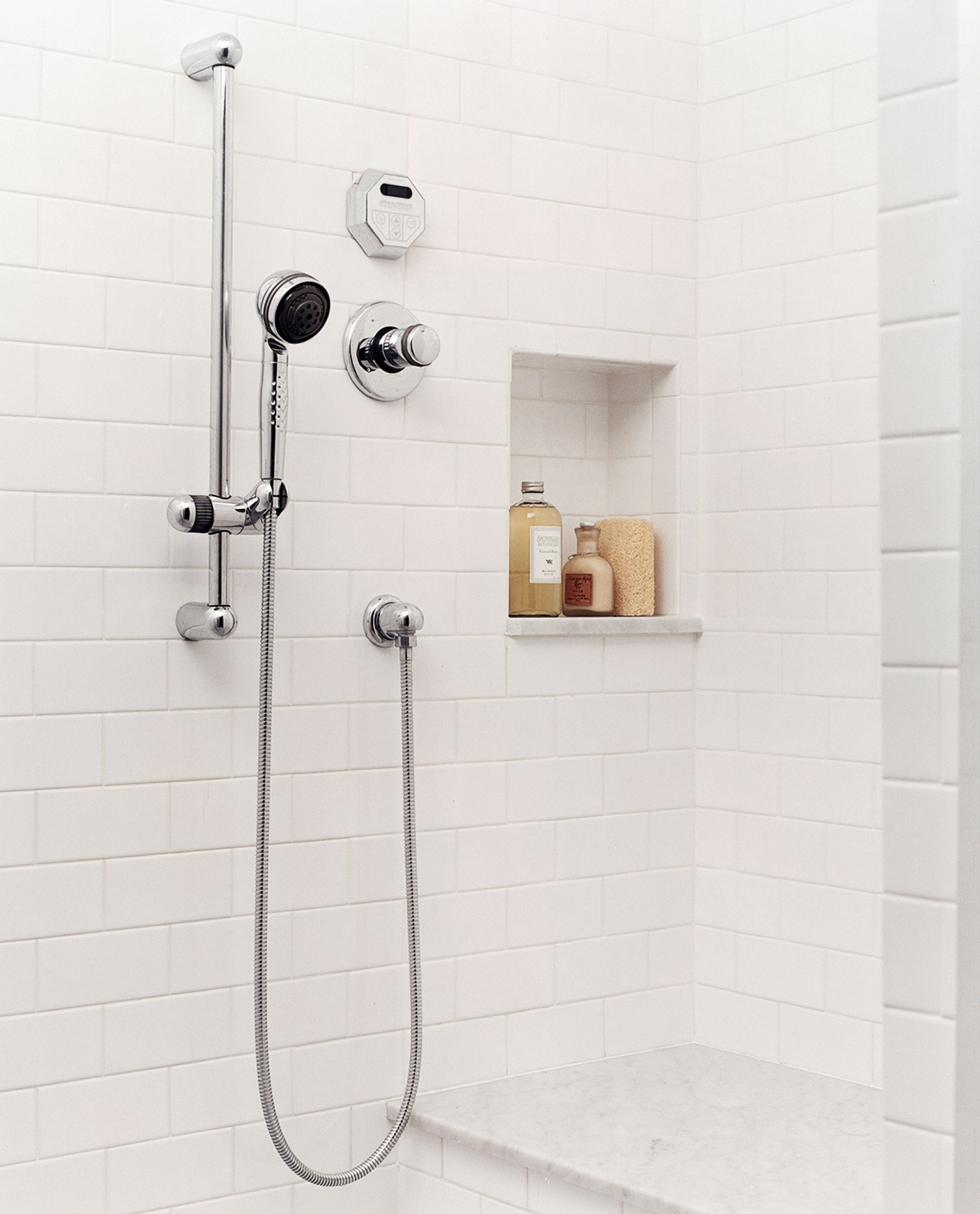
Mastering Bathroom Lighting
Lighting impacts both functionality and ambiance. Keep the following in mind when choosing bathroom lighting.
Vanity Lighting Best Practices
Vanity lighting is important for tasks such as applying makeup or shaving. Follow these guidelines for optimal vanity lighting:
- Avoid relying solely on overhead lighting, which can cast unflattering shadows.
- Install a long fixture above the mirror if side sconces aren’t possible.
- Place light fixtures at eye level (around 66 inches high) on both sides of the mirror, ideally spaced 36–40 inches apart.
Before purchasing fixtures, try to see them in action to ensure they provide the right lighting for you and your space.
Ambient and Task Lighting Tips
In addition to vanity lighting, consider these lighting strategies for a well-lit bathroom:
- Use dimmable fixtures to adjust lighting levels for different times of day or activities.
- Install task lighting near the shower or tub area for safety and convenience.
- Consider adding accent lighting to highlight architectural features or artwork.
- Use warm-toned bulbs (2700K–3000K) for a more flattering and relaxing atmosphere.
Remember that natural light also plays a role in your bathroom’s lighting scheme. If possible, incorporate windows or skylights to bring in daylight and improve the overall feel of the space.
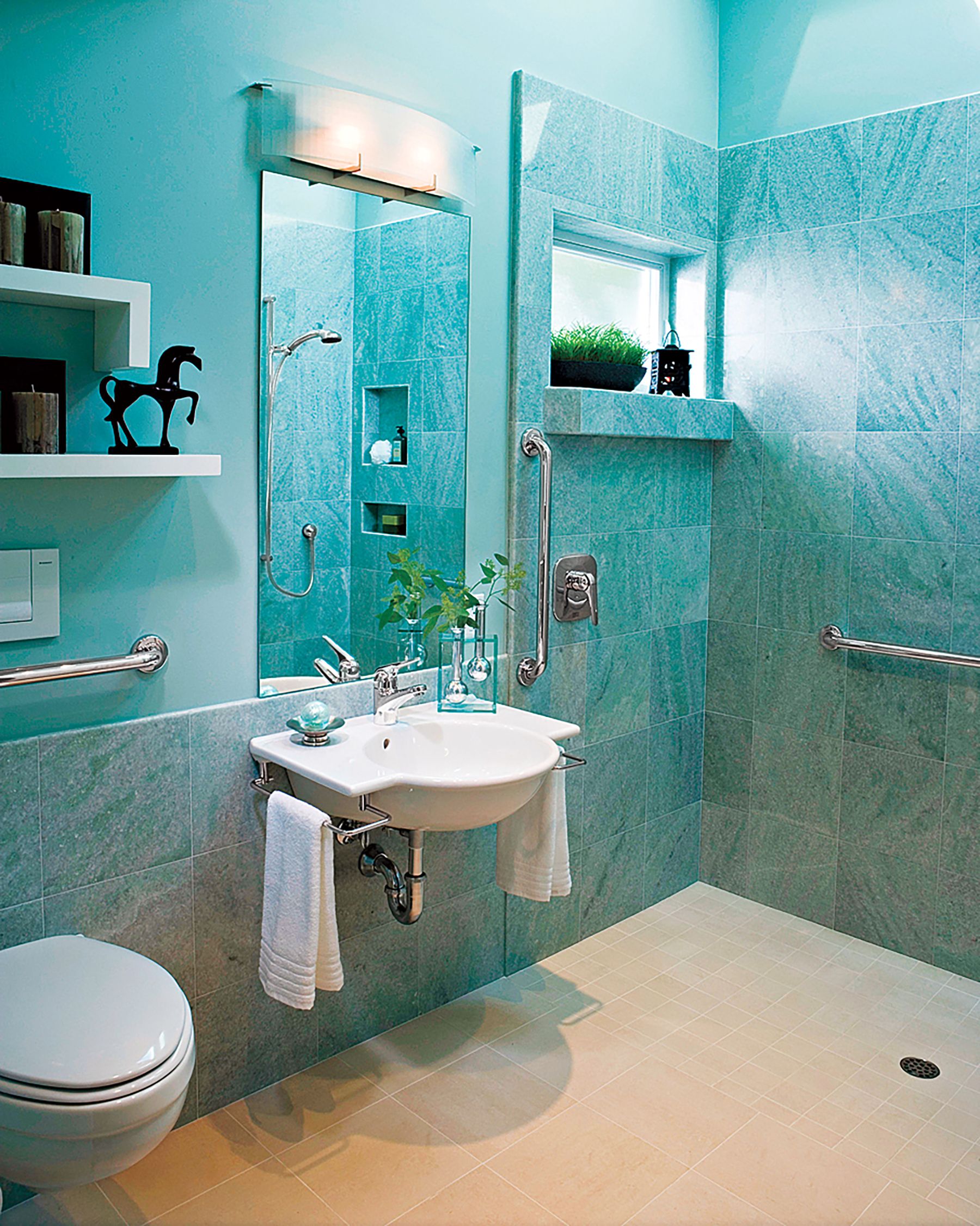
Essential Plumbing and Electrical Upgrades
When renovating your bathroom, you’ll need to address the underlying plumbing and electrical systems. These upgrades can improve functionality, efficiency, and safety in your new bathroom.
Water Heater Considerations
If you’re adding features such as a soaker tub or multi-head shower, you may need to upgrade your water heater. Tank-style heaters are labeled with a first-hour rating (FHR), which indicates how much hot water they can produce in an hour. To determine if your current water heater is sufficient, calculate your family’s hot water usage:
- Bathing: 9 gallons per person
- Shaving: 2 gallons per person
- Showering: 12 gallons per person
- Washing hands and face: 4 gallons per person
If your current water heater can’t meet your needs, consider upgrading to a larger tank or a tankless water heater for on-demand hot water.
Wiring and Outlet Placement
Outdated electrical systems can be both inconvenient and dangerous. When renovating your bathroom, take the opportunity to upgrade the wiring and add outlets where needed. Here are some considerations:
- Add plenty of outlets for all your bathroom appliances, including electric toothbrushes, razors, and hair styling tools.
- Consider installing outlets inside medicine cabinets or drawers for charging devices out of sight.
- Install GFCI (Ground Fault Circuit Interrupter) outlets to protect against electrical shocks in wet areas.
- Replace old 15-amp wiring with a dedicated 20-amp circuit to handle high-power devices such as hair dryers.
Plan outlet placement early in the renovation process to ensure proper blocking and wiring is installed before finishing the walls.
Bathroom Ventilation and Moisture Control
Proper ventilation is essential in any bathroom to control humidity, prevent mold growth, and maintain air quality. A well-planned ventilation system can also extend the life of your bathroom finishes.
Choosing the Right Bathroom Fan
Consider these factors when choosing an exhaust fan:
- For a master bath: Invest in an ultra-quiet unit that won’t disturb sleep during nighttime use. Ensure it has enough power for back-to-back showers.
- For a family or guest bath: A mid-range model in terms of noise level and power should be sufficient. Consider a fan with a humidity sensor for automatic operation.
- For a powder room: Opt for a louder fan to provide sound privacy in areas near public spaces.
Install the fan on a timer so it can run for about 20 minutes after shower use to fully remove steam and moisture. For added convenience, consider a model with a built-in light or connect it to a light switch for automatic operation.
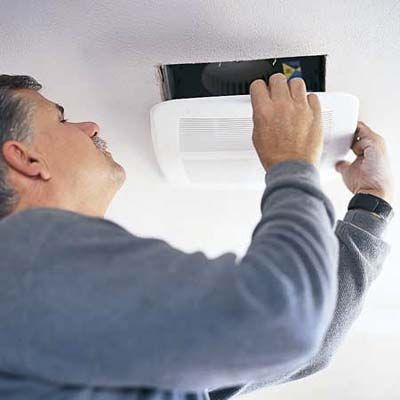
Preventing Mold and Mildew
In addition to proper ventilation, take these steps to minimize moisture-related issues:
- Consider using a squeegee on shower walls after each use to reduce moisture.
- Ensure proper waterproofing behind tile in shower and tub areas.
- Maintain and regularly clean caulk lines around fixtures and joints.
- Use mold-resistant paint and grout in high-humidity areas.
Selecting Durable and Stylish Materials For Your Bathroom
The materials you select for your new bathroom should not only look great but also withstand the humid environment and frequent use typical of bathrooms.
Countertop Material Comparison
You have several options for bathroom countertop materials, such as granite, marble, resin-based cultured marble, and laminate. Natural stones such as granite and marble look beautiful and may increase property value, but you do have to be more vigilant with upkeep. Being porous, they need to be sealed regularly.
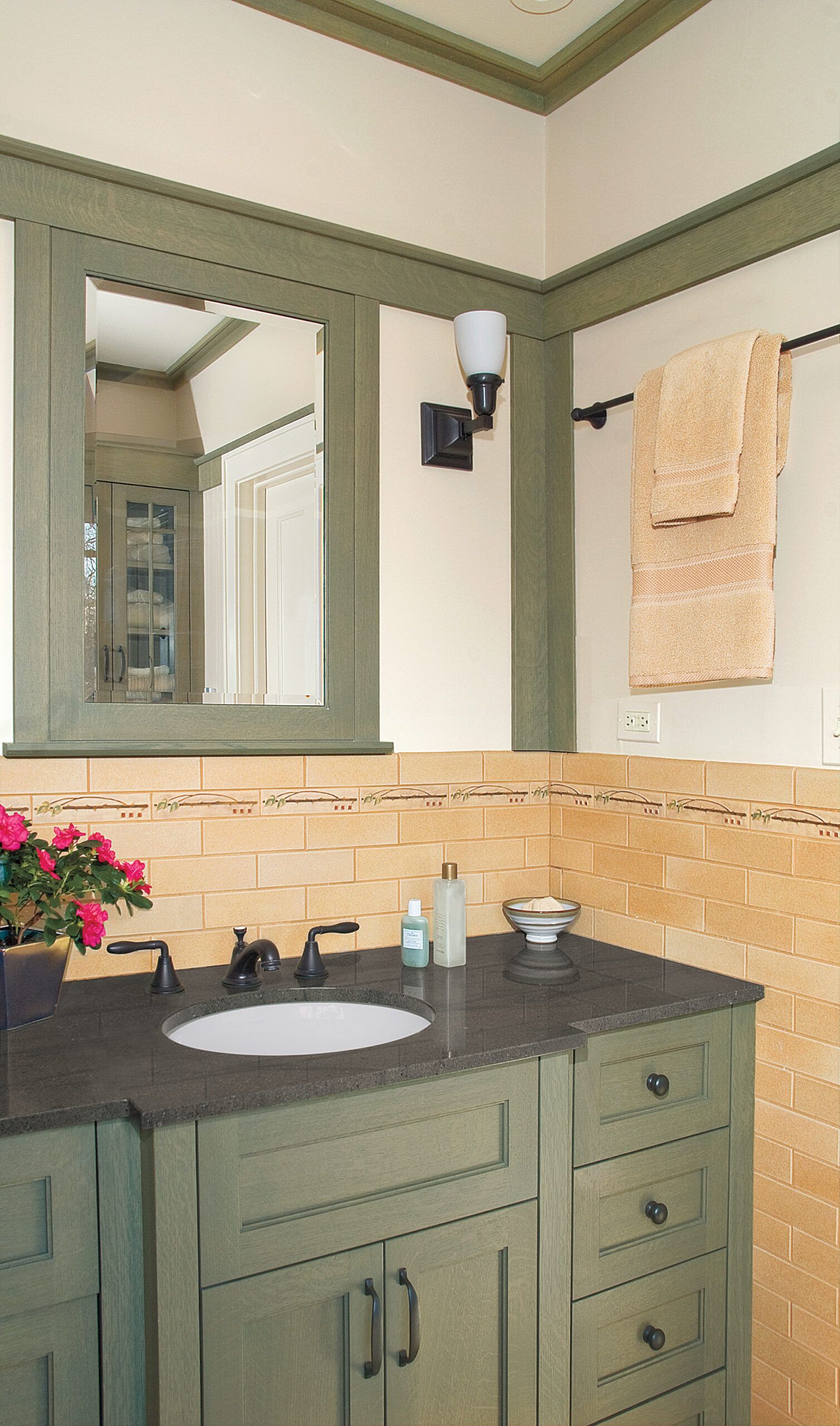
Resin-based countertops aren’t as elegant but can be shaped to suit counter spaces with unusual dimensions. These can be formed as a single, seamless piece and don’t require sealing.
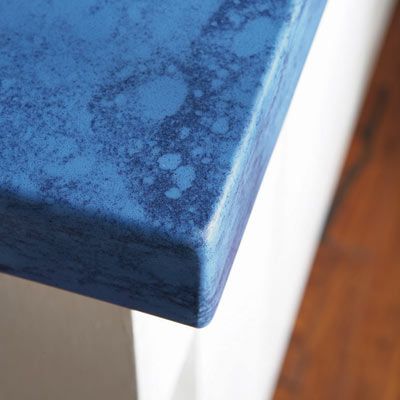
Laminate is often the cheapest option and is the most stain- and scratch-resistant, but it’s not the most attractive material.
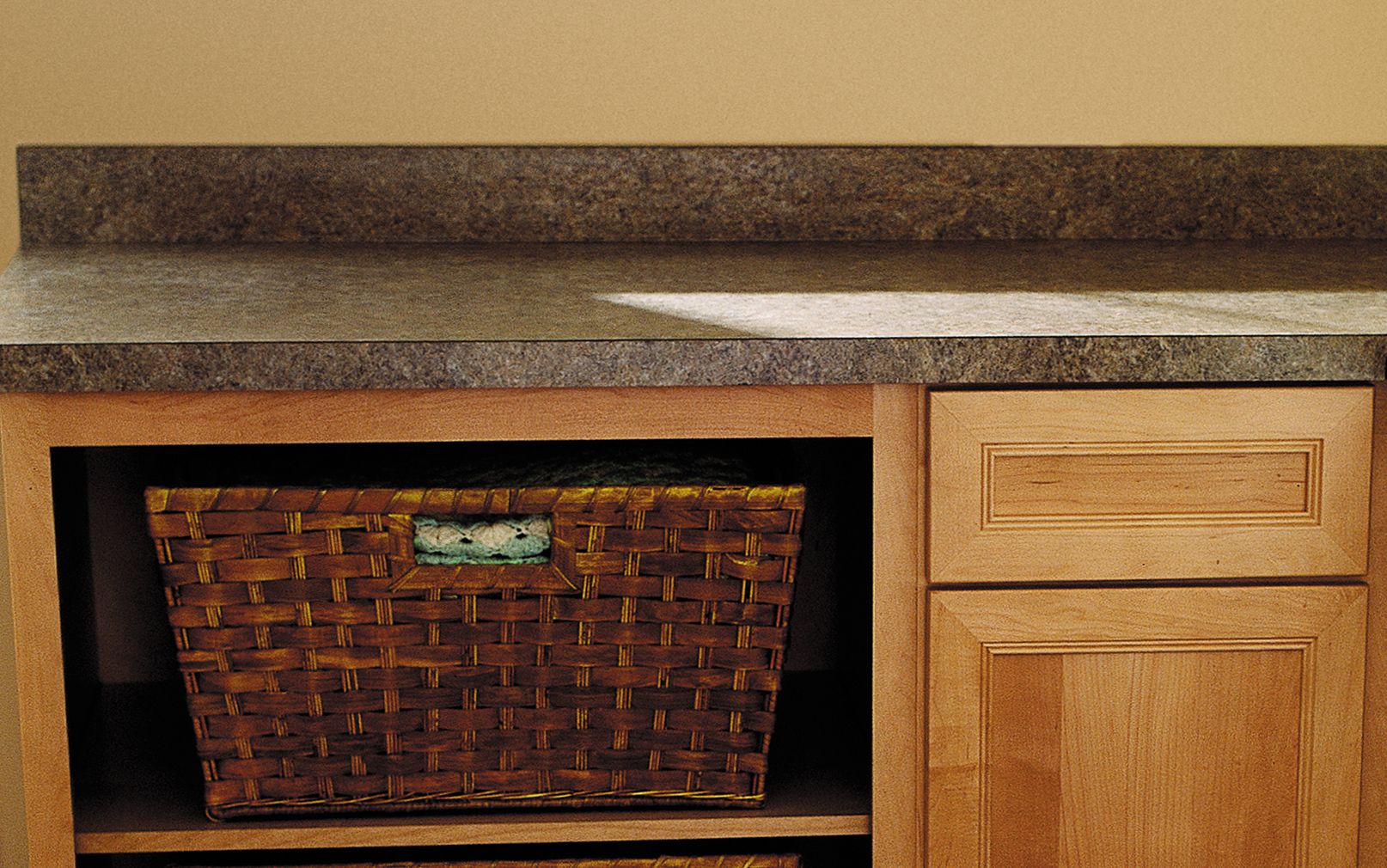
Wall Covering Options
While tile is a popular choice for bathroom walls, below are other options to consider:
- Glass panels: These create a sleek, modern look in shower areas.
- Moisture-resistant paint: A budget-friendly option that comes in endless colors.
- Stone or quartz slabs: A luxurious, low-maintenance option for shower walls.
- Wainscoting: A classic look that’s more moisture-resistant than wallpaper.
Avoid using standard wallpaper in bathrooms, as it typically doesn’t stand up well to humidity. If you’re set on a wallpaper look, opt for vinyl or other moisture-resistant varieties specifically designed for bathroom use.
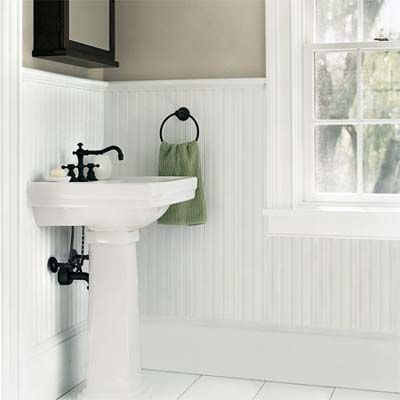
Accessibility and Future-Proofing Your Bathroom
When renovating your bathroom, consider both current and future needs. Incorporating universal design principles can make your bathroom more accessible and comfortable for all users, regardless of age or ability.
Universal Design Principles
Universal design focuses on creating spaces that are usable by people of all ages and abilities. Consider these elements when planning your bathroom:
- Adjustable-height showerhead: A handheld showerhead with an adjustable bar accommodates users of different heights.
- Barrier-free shower: A curbless shower entry eliminates tripping hazards and allows easy access.
- Grab bars: Install near the toilet, shower, and tub for added safety and support.
- Lever-style faucets: These are easier to operate than knob-style fixtures.
- Wide doorways: Aim for at least 32 inches of clear width to accommodate wheelchairs or walkers.
DIY renovations can save you quite a bit of money. Some tasks that can often be handled by homeowners include:
Implementing these features doesn’t mean sacrificing style. Many manufacturers offer attractive, modern fixtures that incorporate universal design principles.
Age-in-Place Considerations
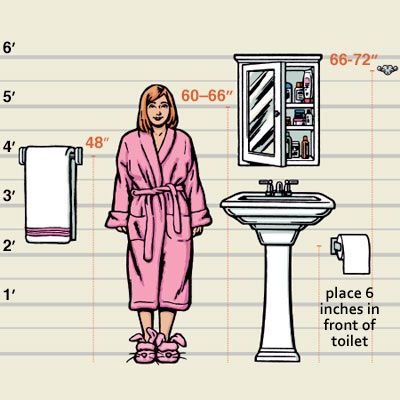
If you plan to stay in your home as you age, consider these additional features:
- Adequate lighting: Ensure the bathroom is well-lit to prevent accidents.
- Lower sink height: A vanity height of 32–34 inches is more comfortable for seated use.
- Non-slip flooring: Choose tiles with texture or small grout lines for better traction.
- Raised toilet: A comfort-height toilet (17–19 inches) is easier to use for those with mobility issues.
Budget-Friendly Bathroom Renovation Strategies
Renovating a bathroom can be a significant investment, but there are ways to achieve a beautiful and functional space without breaking the bank.
Cost-Saving Tips and Tricks
How much your bathroom remodel costs depends on the scope of your project and the quality of design elements you choose, but expect to pay at least a few thousand dollars. Below are some tips to lower your expenses.
- Choose lookalike materials: Opt for porcelain tiles that mimic natural stone for a high-end look at a lower cost.
- DIY where possible: Tackle simpler tasks such as painting or installing hardware yourself.
- Keep the existing layout: Moving plumbing and electrical can significantly increase costs.
- Refinish instead of replace: Consider refinishing existing tubs, sinks, or tiles if they’re in good condition but outdated.
- Shop sales and clearance: Look for end-of-season sales on fixtures and materials.
Remember, it’s often worth investing in quality for items that see heavy use, such as faucets and toilets, as cheap options may need frequent replacement.
Where to Splurge vs. Save
Splurge on the following:
- Durable flooring
- Efficient ventilation fans
- Quality plumbing fixtures (faucets, showerheads)
Save money on these elements:
- Cabinet hardware
- Decorative items (can be easily changed later)
- Lighting fixtures (as long as they provide adequate illumination)
DIY vs. Professional Bathroom Renovations
Deciding whether to tackle your bathroom renovation yourself or hire professionals depends on several factors, including the complexity of the project, your skill level, and your budget.
Advantages of DIY Projects
DIY projects allow you to work at your own pace and make changes as you go. However, it’s important to be realistic about your abilities and the time required to complete the tasks.
- Installing new hardware on cabinets and doors
- Painting walls and ceilings
- Replacing faucets and fixtures
- Tiling backsplashes or floors (with some practice)
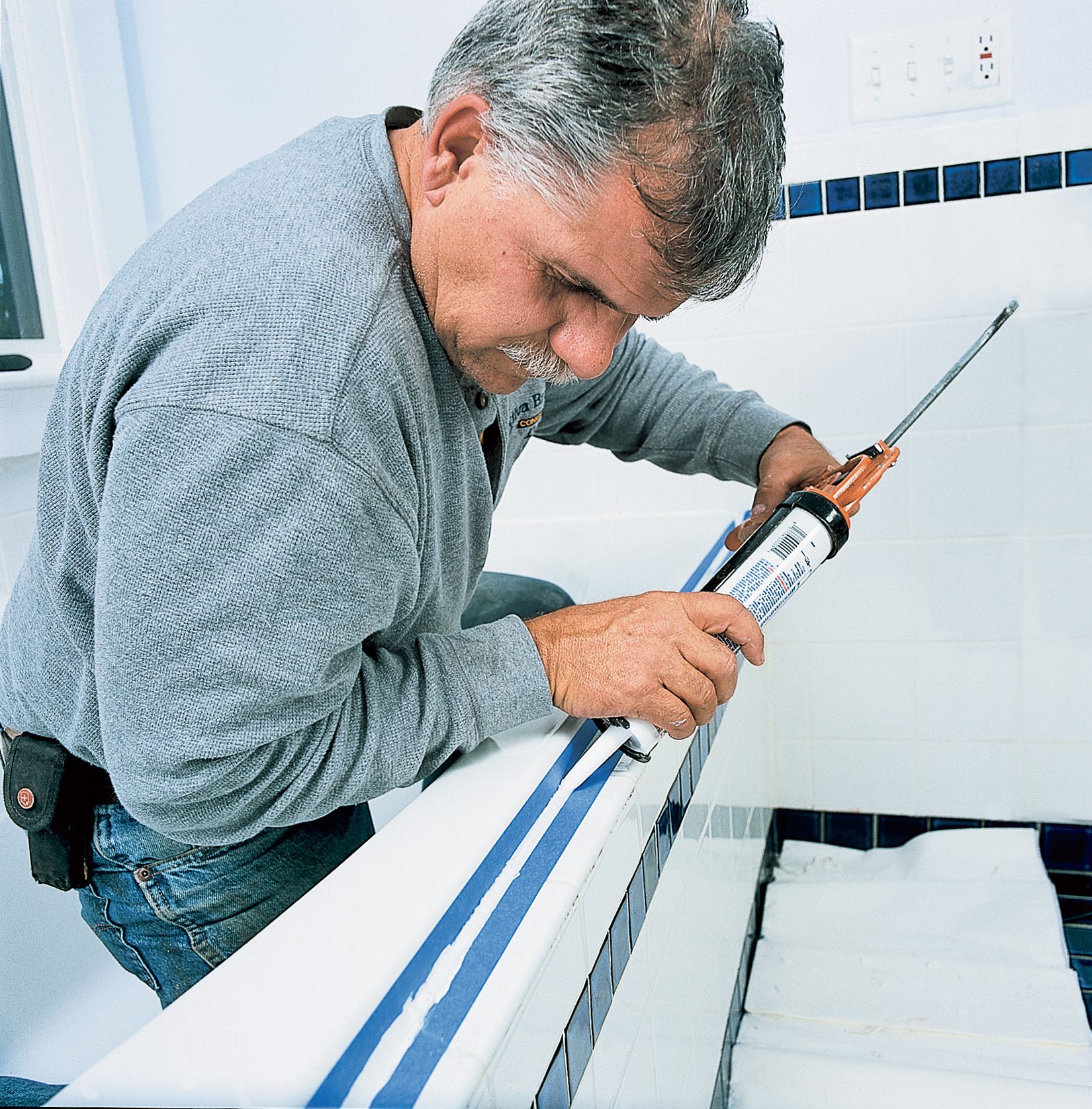
When To Hire Professionals
For more complex or technical aspects of a bathroom renovation, we recommend hiring professionals. Situations where professional help is recommended include:
- High-end finishes and custom work: Professionals can achieve a level of precision and quality that may be difficult for DIYers.
- Plumbing and electrical work: Ensuring these systems are up to code is crucial for safety and functionality.
- Structural changes: If you’re moving walls or altering the layout, professional expertise is necessary to ensure structural integrity.
Hiring professionals can streamline the renovation process, ensure adherence to building codes, and reduce the risk of costly mistakes.
Our Conclusion
Renovating a bathroom is a substantial investment that can enhance your home’s comfort and value. Whether you embark on your bathroom renovation as a DIY project or hire professionals, the key to a successful renovation lies in attention to detail, planning in advance, and thoughtful decision-making. If you’re not ready for a full bathroom renovation, check out our bathroom remodel ideas.
